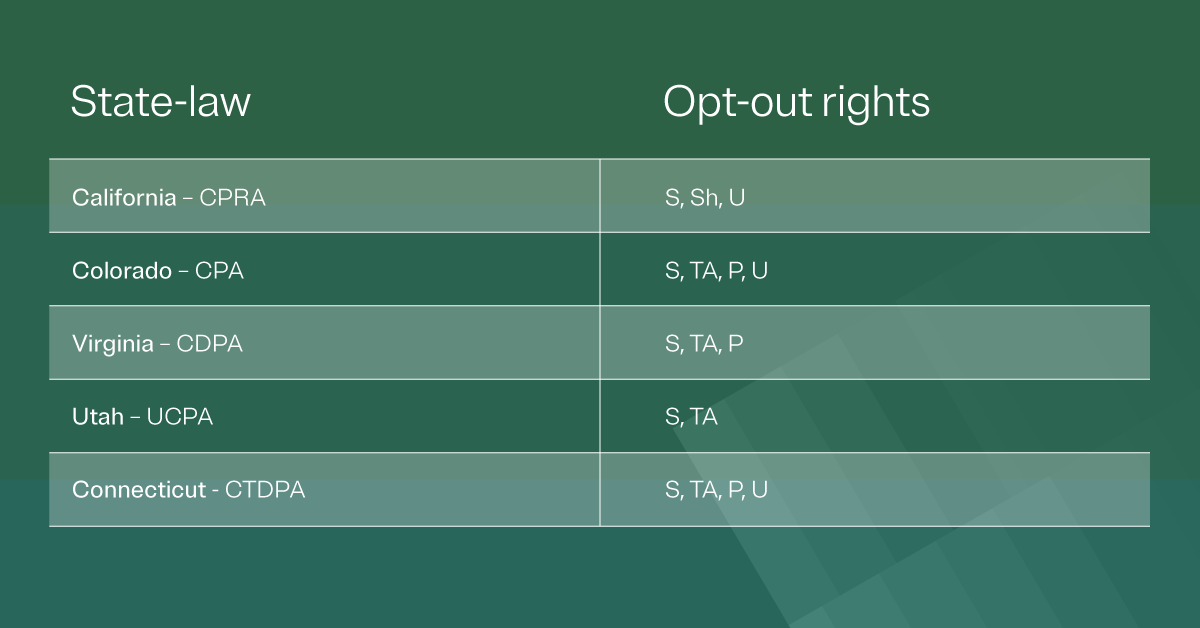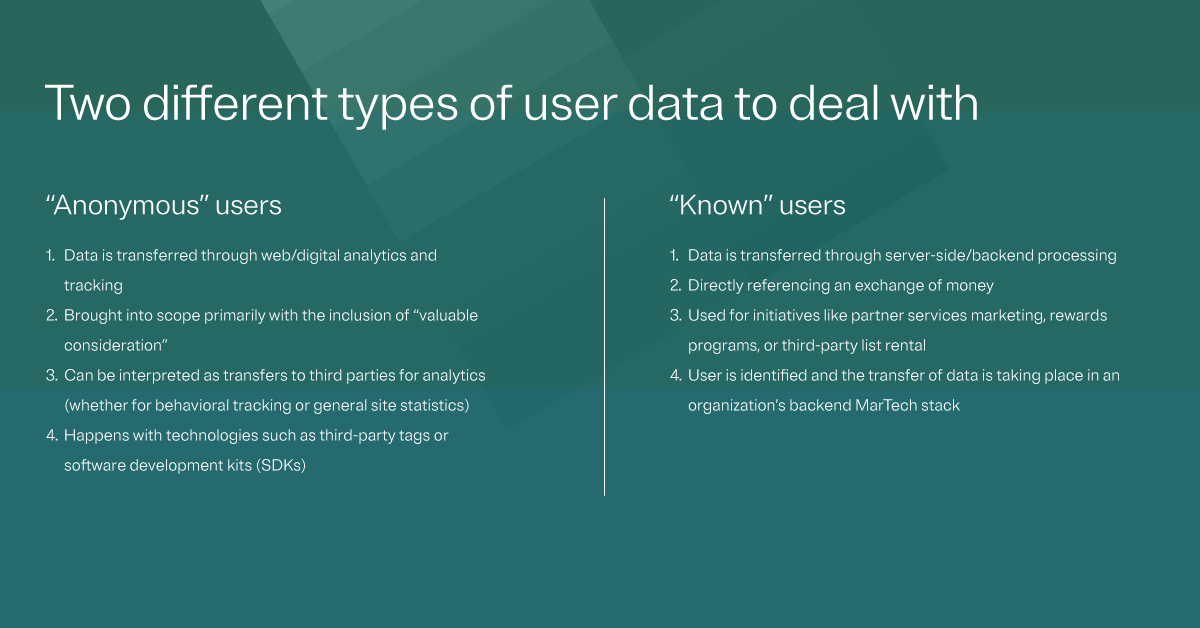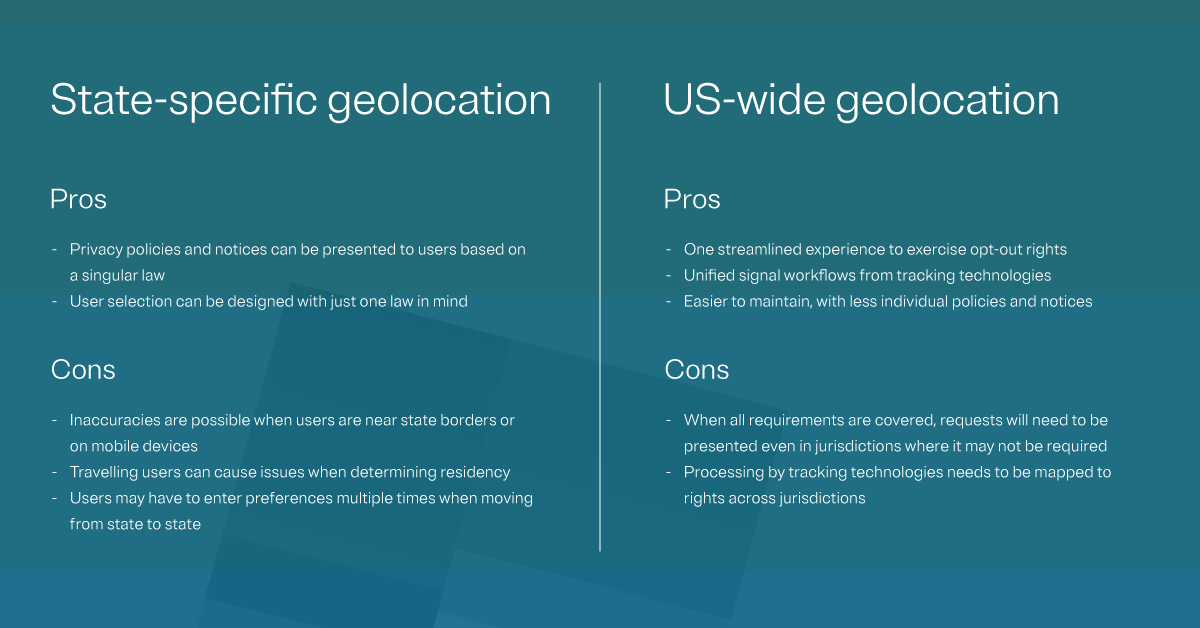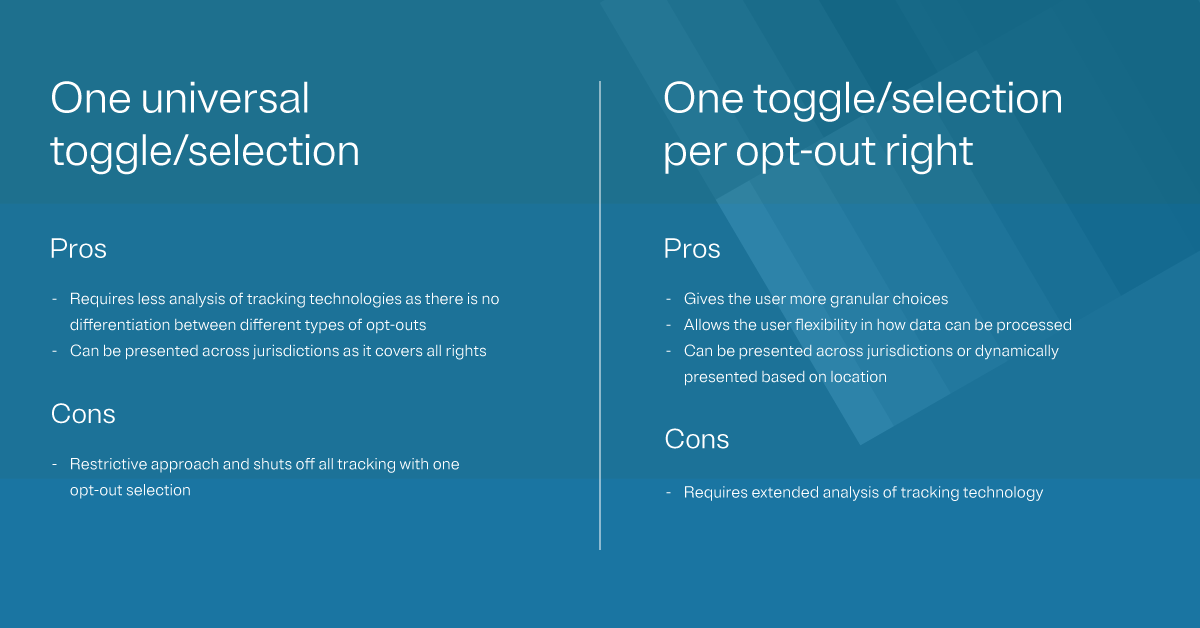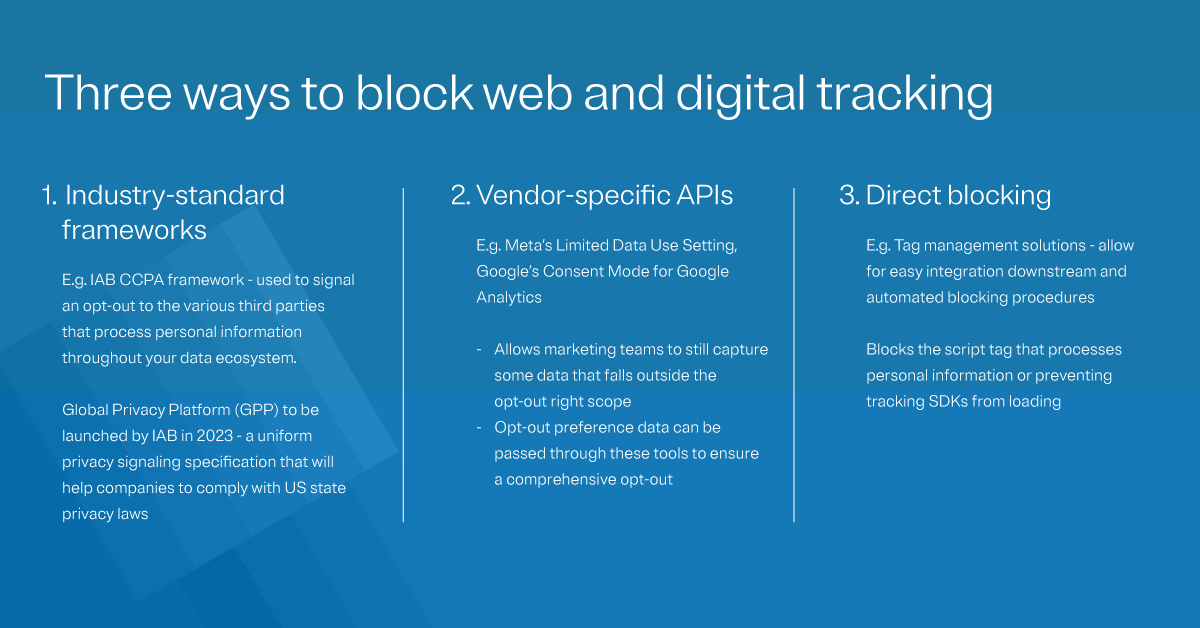1. Industry-standard frameworks
One of the most common frameworks is the IAB CCPA framework, which can be used to signal an opt-out to the various third parties that process personal information throughout your data ecosystem. The IAB also announced the launch of the Global Privacy Platform (GPP) in 2023, a uniform privacy signaling specification that will help companies to comply with US state privacy laws.
2. Vendor-specific APIs
Many tracking tools today have their own privacy controls, such as Meta’s Limited Data Use Setting, or Google’s Consent Mode for Google Analytics. These allow marketing teams to still capture some data that falls outside the opt-out right scope. Opt-out preference data can be passed through these tools to ensure a comprehensive opt-out.
3. Direct blocking
Tracking technologies can be blocked directly by blocking the script tag that processes personal information or preventing tracking SDKs from loading. Tag management solutions are the most common way to do this. These allow for easy integration downstream and automated blocking procedures.
Backend processing
An opt-out usually needs to be communicated to backend systems to stop any data processing that the user opts out of. These integrations are dependent on your tech stack and its architecture.
Data mapping
The backend systems that perform selling, profiling, or targeted advertising on the data first need to be identified, while the specific fields that store this data and allow processing need to be mapped as well. Mapping the opt-out data lifecycle is key to the efficient handling of these requests.
Integration methods
Different systems have different authentication and integration requirements. Take a look at whether your opt-outs can be passed in real-time or in batch processes, which protocols are required, and how to communicate this to third parties.
OneTrust for optimal opt-outs
As more regulations come into effect and online privacy becomes a growing concern globally, make sure your consumers’ personal information is collected in line with all applicable privacy laws to your organization.
OneTrust Consent & Preferences can help your organization handle opt outs with ease. Give your users choice and control over their data, with dynamic trust centers that indicate communication preferences while allowing users to view their consent history. Use automated workflows and integrations across your MarTech stack to enforce user consent and preferences downstream, across all marketing and communications.
Request a free demo to learn more.


